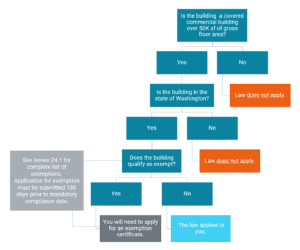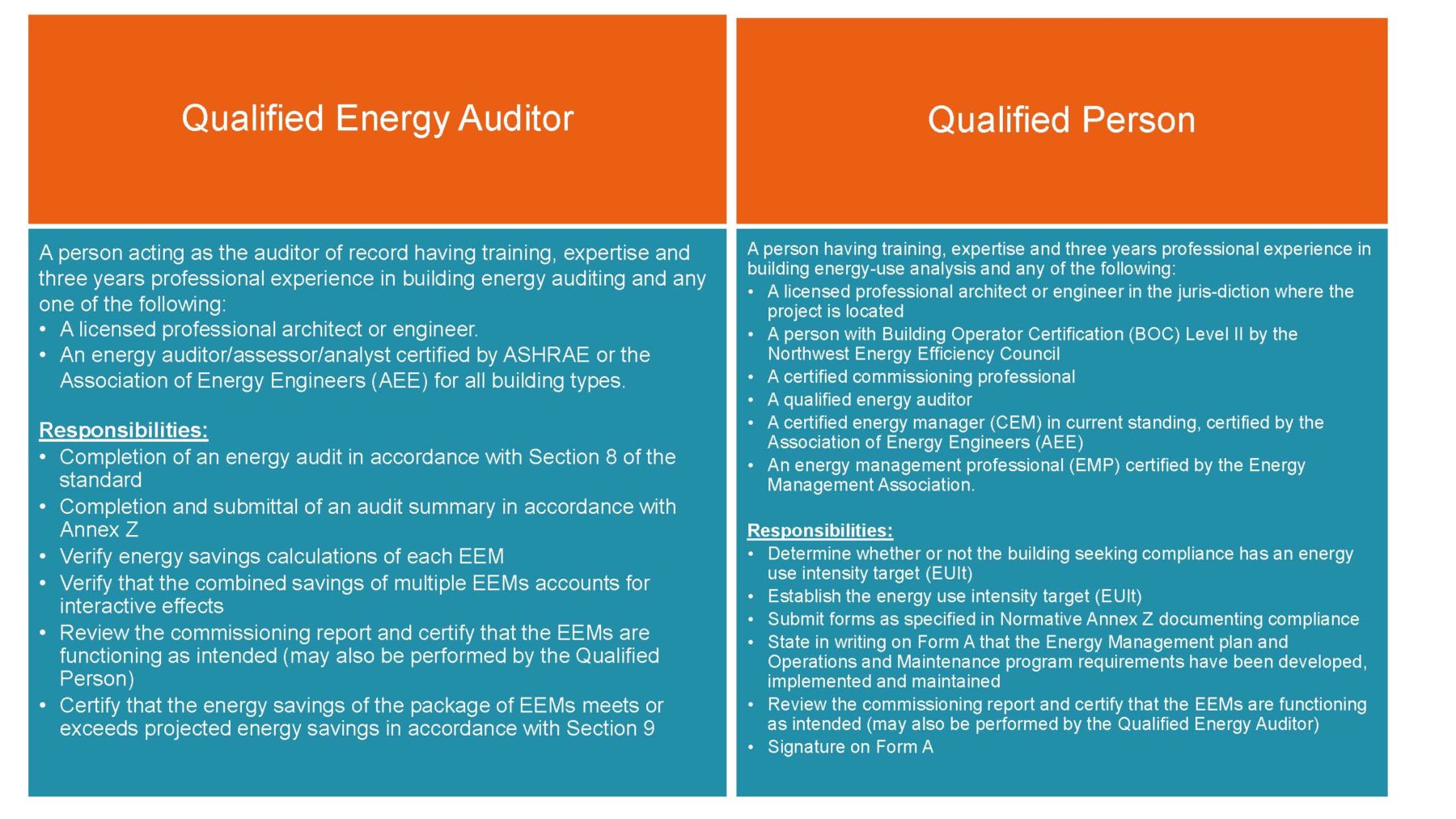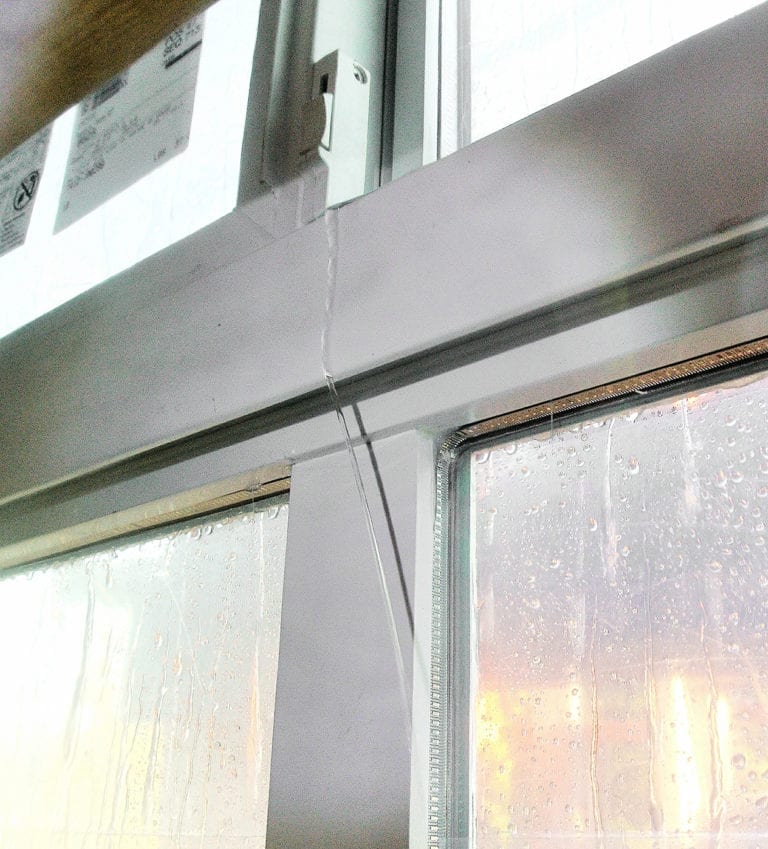Update 2023 06 06:
Tier 2 Rule making is in-progress and is expected to be done this fall/winter, updates to follow.
Currently, all buildings that fall under Tier 2 (20K -50K and all multifamily) must:
- Setup their Energy Star Account and Benchmark their building
- Develop their Operations and Maintenance Programs
- Develop their Energy Management Plan.
Multifamily buildings over 50K can apply for the Early Adopter Incentive Program if they are over 15EUI above their target EUI.
Update 2022-05-28:
Tier 2 was just added to the Clean Buildings Performance Standard in March of 2022. This adds smaller commercial buildings down to 20,000 GSF and all multifamily buildings 20,000 GSF and larger with 4 units or more.
The compliance date has not been set at this time but is expected to be sometime around 2027 -2032. For now, these building owners are encouraged to setup their Portal Account and start benchmarking their buildings, so they are ahead of the curve. Time to start looking at your short-term and long-term planning/budgets!
There is a separate Early Adopter Incentive Program for this Tier 2 group which consists of $150 Million. The payout will be $0.30 per GSF of conditioned space if you meet compliance by the deadline or earlier.
At RDH, we’re here to help building owners understand and comply with new building legislation. The Clean Buildings Performance Standard, implemented by Washington State in 2019, is a recent example of clean building legislation being introduced across the country. The Standard draws upon existing energy efficiency guidelines and, with its focus on reducing energy consumption, is unique among its East Coast counterparts.
With compliance dates starting as early as 2026, it can be easy to assume that there’s more than enough time to get started. However, the standard requires benchmarking and tracking to ensure full compliance at least one year in advance of the earliest deadline, so the sooner an owner starts, the better. The pandemic has also had a massive effect on the energy usage and accurate benchmarking of commercial buildings, making it even more important for building owners to act quickly.
What is the Clean Buildings Performance Standard, and why does it matter?
The Clean Buildings Act was signed into law in May 2019. The objective of the Clean Buildings Act is to lower costs and pollution from fossil fuel consumption in existing buildings, especially large commercial buildings. The law requires the Department of Commerce to develop and implement an energy performance standard for these buildings and to provide incentives to encourage efficiency improvements.
Upon the Act being approved and made into law, the Clean Buildings Performance Standard was born.
All buildings over 50,000 gross sq ft are required to be in compliance with the Clean Buildings Performance Standard, but there are exemptions!
The Clean Buildings Performance Standard applies to covered commercial buildings, which are defined as non-residential, hotel, motel, and dormitory buildings greater than 50,000 gross square feet, excluding the parking garage area. Buildings that meet this criteria and were constructed under the 2018 building code (or older versions) need to comply. Some buildings are exempt but will still need to follow a compliance path by documenting their exemption qualification.
Building owners can refer to the following diagram to determine exemption:
Figure 1: Program Applicability Chart (https://www.commerce.wa.gov/wp-content/uploads/2021/03/Exemption-Checklist-1.pdf)
There are hundreds of eligible exemptions. Here are a few examples:
- If the building is vacant
- If the building is not operating on the compliance date (i.e. soon to be demolished)
- If more than 50% of the gross floor area of the building is primarily used for manufacturing or other industrial purposes
- If the building is an agricultural structure
- If they are federal or tribal buildings.
Full exemption certificate eligibility can be checked by reviewing the criteria listed in Z4.1 section of the legislation. Building owners seeking exemption approval need to submit to the Department of Commerce no sooner than one year and no later than 180 days prior to the compliance date. For information on when exemption forms will be available, sign up here.
Early Adopter Incentive Program for the Clean Buildings Performance Standard
The Early Adopter Incentive Program encourages building owners to start making energy efficient upgrades as soon as possible. The program roll-out began in July 2021 with all building owners having received notices from the State Assessor’s Office.
In coordination with energy-providing utilities, this program provides a one-time performance-based incentive payment of $0.85 per gross square foot. The incentive operates on a first-come, first-served basis and is currently capped at $75 million, so it’s important to start as soon as possible to capture this benefit.
To qualify, buildings must meet the following criteria:
- Be a covered commercial or multi-family building over 50,000 square feet.
- Have at least one electric utility, gas company, or thermal energy company providing energy services. If a building has more than one energy provider, the owner must record how much energy is used for each individual energy type.
- Must be 15 EUI or more above the target EUI. Energy Use Intensity (EUI) is expressed as energy per square foot per year. A higher EUI means more energy used annually, which is not desirable. The program prioritizes buildings which are 15 or more EUI from the building’s target EUI for the incentive payment.
- Bring the building into full compliance with the Clean Buildings Performance Standard and meet their target EUI.
For more information about qualifying for this program, download the Early Adopter Incentive Guidebook.
Basic Clean Buildings Performance Standard compliance steps for building owners
There are five basic steps that need to be followed in order to comply with the Standard. Our team of professional engineers, architects, and administrative personnel are here to help guide building owners through each step of the process.
Step 1 — Assess building EUI by registering for an Energy Star Portfolio Manager (ESPM) account.
The compliance process is dependent on a building’s EUI. Depending on whether or not they meet their EUI Target, building owners will have to follow different compliance pathways.
Most building owners already have an Energy Star Portfolio Manager account, but for those who don’t, Energy Star provides training and information on their site. Building owners will use this site to establish their building performance metrics so they can transfer this data over to the Dept of Commerce Portal Account, which in turn will help determine which compliance path to pursue. For buildings in the City of Seattle already are required to provide this matrix so it will be easier for them to transfer their data to the Department of Commerce Portal site.
Figure 2: Compliance Path Based on EUI (https://www.commerce.wa.gov/growing-the-economy/energy/buildings/how-to-comply/)
Step 2 — Create an account in the Clean Buildings Portal and assess eligibility for the Early Adopter Incentive Program. Begin developing plans to implement energy efficiency measures (EEMs).
Communication between the building owner and the Department of Commerce will occur through the Clean Buildings Portal. This is also where the building owner will complete required documentation to determine a building’s existing energy activity and target EUI. At the end, they will understand their Target EUI (EUIt) which will allow them to determine eligibility for the Early Adopter Incentive Program.
Step 3 — Apply for certification by the Department of Commerce. Begin implementing EEMs.
In this step, the Department of Commerce will review applications to determine incentive eligibility and how much it will be. This step is also where building owners will begin to implement their EEMs: an Energy Management Plan (EMP) and associated Operation and Maintenance (O&M) program for each building, which are mandatory parts of the compliance process. These phases require specialist support that our team is equipped to provide.
- An Energy Management Plan (EMP) helps to identify economical solutions that promote energy efficiency. It is a roadmap whose objective is to significantly reduce the energy use of a building while also improving the building’s productivity. Implementation of this plan will require specialists—either an Energy Auditor or Qualified Person—to perform specific duties. Our team can fulfill both roles and will review what changes the building can make to reduce its energy consumption.
- Each building system is also required to have an operations and maintenance (O&M) program that, at a minimum, preserves the condition of the system and its elements in a manner that enables the system to provide the intended thermal and visual comfort, energy efficiency, and helps to achieve the intended indoor environmental quality required for the building. At a minimum, the O&M program shall contain an inventory of equipment, systems, and controls to be inspected and maintained and a maintenance plan describing the goals, objectives, and execution of the systems maintenance program. This includes the building envelope.
We recommend working with an RDH consultant to review which changes the building owner(s) can make to reduce energy consumption and to understand which building components will meet the Standard’s stringent energy efficiency requirements when replacement is needed.
Once energy efficiency measures are implemented, building owners and the required specialists will document their compliance path through the Clean Building Portal.
Figure 3: Description of Specialized Roles (https://www.commerce.wa.gov/wp-content/uploads/2021/02/Role-and-Responsiblities.pdf)
Step 4 — Receive payment of calculated incentive amount from participating utilities.
In this step, the Department of Commerce authorizes the calculated incentive payment to be paid by the participating utilities providing energy services. Payments to the building owners will depend on the utilities’ provider decision.
Please note that payments will only be provided after full compliance is demonstrated to and approved by the Department of Commerce. Partial incentives are not available. If you don’t meet your target you will need to perform more improvements or pay non-compliance fines.
Step 5 — Tracking.
This step tracks the calculated and paid inventive funds through the Clean Buildings Portal as well as the building’s 5-year reporting cycle. Building owners will need to start tracking their activities at least one year before the compliance date.
What is the compliance schedule for building owners?
Eligible building owners must meet the following reporting schedule for complying with the Clean Buildings Performance Standard and for every 5 years thereafter.
Compliance dates by building size are as follows:
- June 1, 2026 – over 220,000 square feet
- June 1, 2027 – 90,001- 220,000 square feet
- June 1, 2028 – 50,000- 90,000 square feet
Remember that building owners need to show their normal consumption rates 12 months prior to the deadline so, once again, it’s best to get started early.
Our expertise can help ensure building compliance.
RDH is equipped in numerous ways to guide building owners throughout this process. Besides having the personnel to fulfill the Clean Buildings Performance Standard’s specialist roles, we have extensive experience with deep building energy retrofits.
We have also published our own documentation about the process: the ASHRAE 100 Users’ Guide offers various typical energy efficiency measures that can be applied to existing buildings to meet their energy targets. It also identifies commonly applied elements that can improve building performance.
If you’d like to learn more about how RDH can help ensure building compliance, please get in touch.





